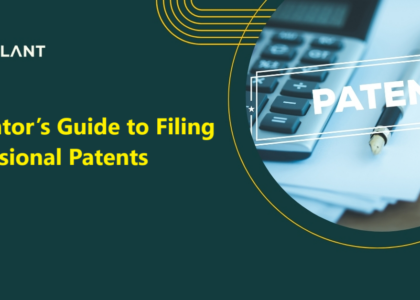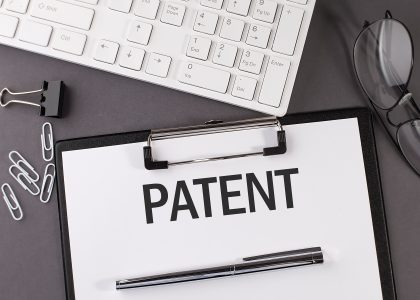Top Questions We Get Asked About Provisional Patent Applications
Provisional patent applications are widely recognized in the startup world as an inexpensive means to preserve patent rights, but practical knowledge can be difficult. The following are the most commonly asked questions concerning provisional patent applications by our clients. Please remember that the information provided here is for general purposes only and does not constitute official professional advice.
Is a Provisional a Real Patent?
” Is a provisional patent application a legitimate patent application?” “Yes,” is the response! A provisional patent application is a legal document submitted with the United States Patent and Trademark Office that provides basic patent-pending protection. A provisional patent application, on the other hand, is best defined as a placeholder for a formal patent application. If you do not file a standard patent application within a year, your provisional patent application will expire.
Because a provisional patent application must eventually be transformed into a formal one, you must ensure that all factual information for your proper patent application is contained in your initial provisional patent application. A provisional patent application is a relatively inexpensive way to secure a patent application filing date for your invention quickly; however, the risk of a provisional patent application is that you may inadvertently omit critical information that is required to support your formal patent application.
What’s the Difference Between a Provisional and a Formal Application?
Unlike a formal application, a provisional patent application has very few standards for the contents, and the patent office will not even consider your application. As a result, provisional patent applications may differ significantly from official applications. Provisional applications do not require claims, and claims are sometimes excluded entirely. For a pitch, a startup may file an academic paper, marketing materials, or a slide deck—the proposal needs to explain the innovation.
A formal application is a highly technical document that a patent expert should produce. The greatest patent protection is a standard patent application. Still, for cash-strapped startups, it’s customary to accept the risk that a provisional patent application may be ruled defective so that you can arrange a filing date quickly and effectively. A PCK specialist can assist you in minimizing that risk so that your provisional patent application provides the most protection for your business.
When Can I Say “Patent Pending”?
The word “patent pending” may be a great sales motivator. You can use that phrase in marketing, sales presentations, and pitches from when your provisional patent application is submitted until your patent application expires or is abandoned. In a pinch, you may even state “patent pending” if you intend to file a patent application and follow through on that purpose.
When Can I Tell People About My Invention?
You may already be aware that, to acquire patent protection, inventions must be kept private. Generally, a patent application changes a trade secret into another sort of IP protection; hence, you must file your patent application before discussing it.
So, when can you start informing everyone about your incredible invention? You can disclose information about your innovation without losing your patent rights as soon as you file the provisional patent application. However, your protection will be restricted to the contents of the provisional patent application, which means that you can securely reveal just the elements of the invention mentioned in the provisional patent application. As a result, several new businesses include their real sales presentations or marketing materials in their provisional patent application.
What If I Change My Invention Later?
Your product may still be in development as a startup. Fortunately, there are a few alternatives for keeping your patent application relevant even after you pivot.
When you file the formal patent application, you can update the provisional patent application to reflect the most recent version of your device. The disadvantage of this method is that additional information submitted to the formal application will not have the same filing date as the elements in your initial provisional application. Because patent rights are granted to the first person to file a patent application, not the first person to invent, filing dates are critical.
To avoid being beaten to the patent office, you can file further provisional patent applications during the one-year term before submitting your official application. Update the original application and refile it if you make a substantial change to the invention. You can combine all provisional applications into one formal application at the end of the year.
Does a Provisional Give Me Worldwide Patent Rights?
A provisional patent application gives patent protection solely in the United States; but, as long as you have not already revealed your invention, you can utilize the provisional application in the United States as the foundation for submitting applications in other countries for up to a year later. When you formally submit your provisional application, you must choose which countries to file in and pay filing costs for each. After 18 months or 30 months from the date of your provisional application, you must decide which countries to apply in and pay the filing fees for each. By filing your official patent application as a PCT Application, you may extend your protection in most countries worldwide for an additional 18 months (notable exceptions include Taiwan and Argentina).
Can I file more than one provisional application for the same invention?
Yes. An applicant can file as many provisional applications as desired for a single invention during the one-year “life span” of the first provisional application.
Can I Write My Own Provisional?
You may, indeed, create your provisional application. In an ideal world, your provisional patent application would be “formal-ready” and prepared by a patent specialist, but a self-authored interim may do for small businesses. This method is not without danger, and you may unwittingly commit mistakes that jeopardize your patent rights in the future.
When Does a Provisional Patent Application Expire?
A provisional patent application automatically expires 12 months after the filing date. No extensions are available.
Can I Refile the Provisional After It Expires?
Yes, when a provisional patent application has expired, you can resubmit it. It is important to note that you can only refile it once the initial provisional patent application has expired. Unfortunately, this means you must reimburse the filing fees, and, more crucially, you will forfeit the advantage of your original filing date. This implies that the patent office will consider any prior art published between the original filing date and your new filing date when evaluating your formal patent application. Furthermore, if someone applies to the identical invention before you refile your provisional application, their claim to the patent will precede yours.
Should I Be the Applicant, or Should I Set Up a Corporation?
In virtually all cases, it is best to form a corporation to be the owner and applicant of your patent application. Ownership concerns can be difficult and costly to address later, so it is preferable to incorporate them immediately and place all of your business assets in the corporation’s name. If you are the single inventor, you may postpone this choice; however, if there are co-inventors, it is exceedingly dangerous to file a patent application in the names of both inventors since you must agree on every decision impacting the application.
What if There Is More Than One Inventor?
The number of inventors mentioned on a patent application is unlimited. Each inventor must sign an assignment form surrendering their rights to the applicant, which might be a business.
Can I Still File a Provisional if I’ve Disclosed My Invention?
Maybe. You can still file a US provisional patent application if you revealed your invention the previous year. Still, you will not be allowed to apply overseas based on the provisional.
After a public disclosure, you will not be able to gain patent rights in the majority of nations, including Europe and China. Also, selling your innovation for sale, whether openly or under NDA, is considered a public disclosure of the invention in the United States.








